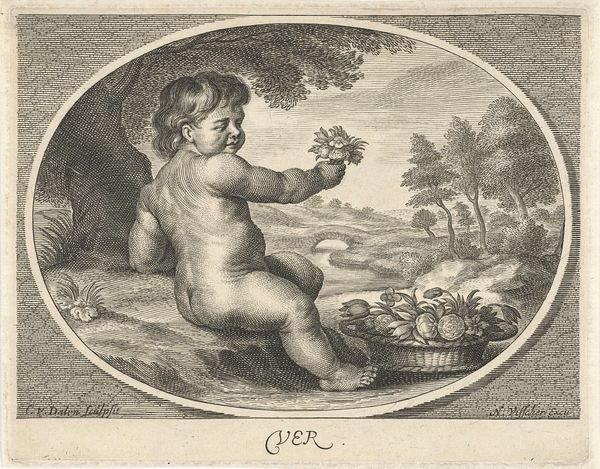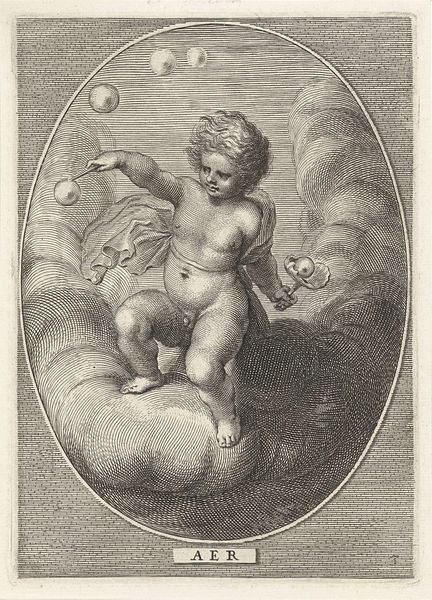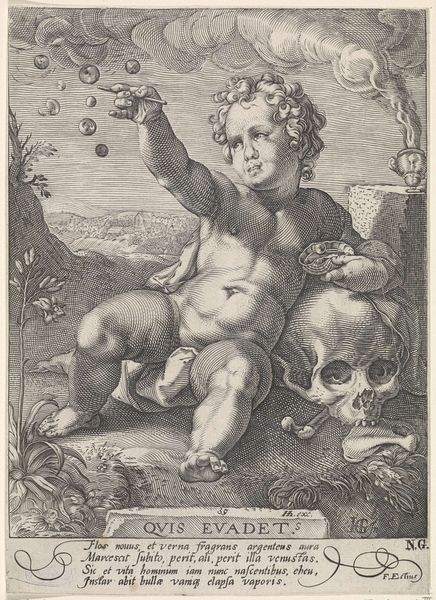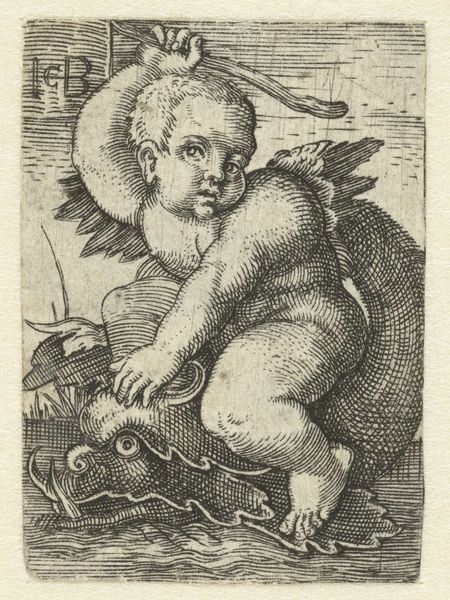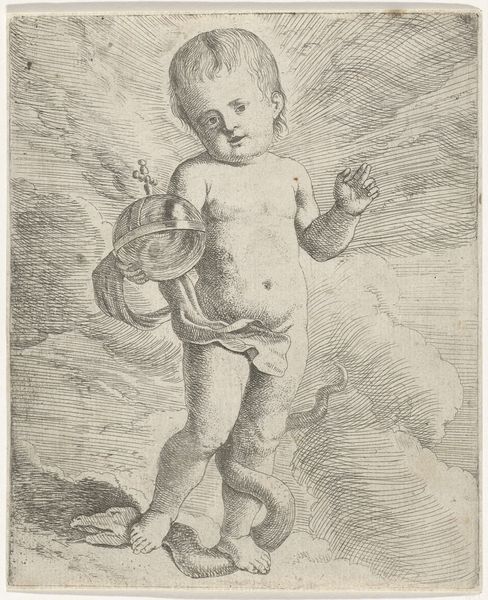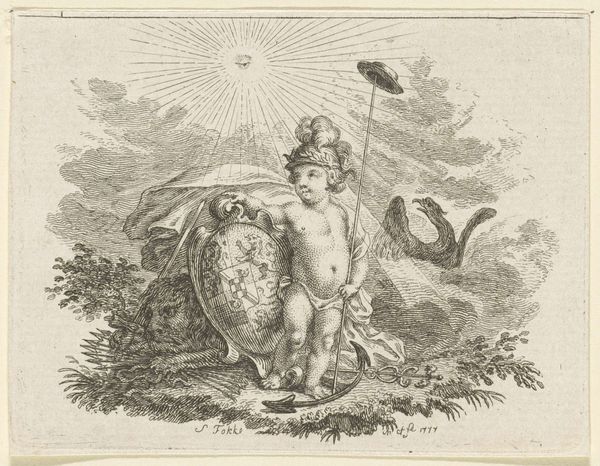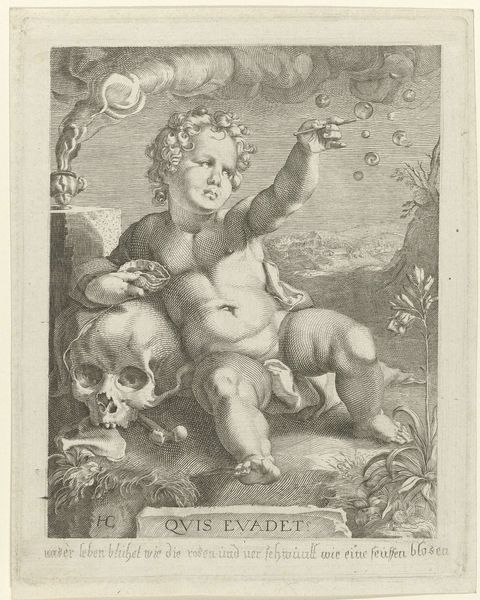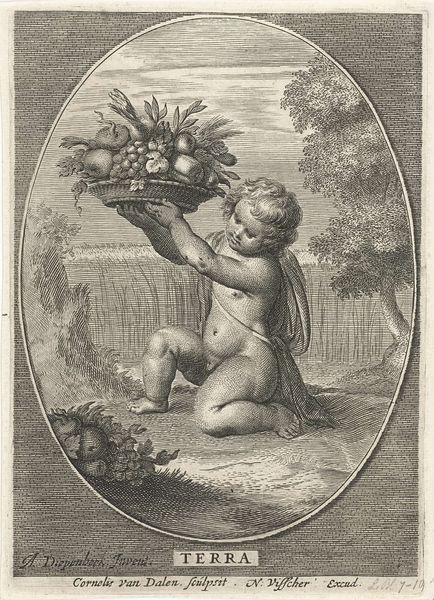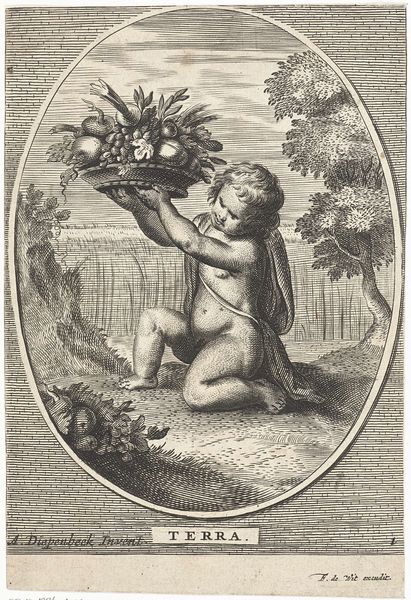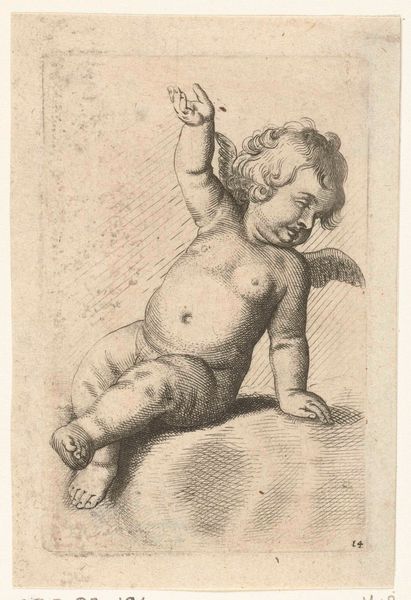
Herfst in gedaante van kind met druiventros en fruit in ovaal 1648 - 1664
0:00
0:00
engraving
#
portrait
#
allegory
#
baroque
#
old engraving style
#
caricature
#
classical-realism
#
portrait drawing
#
genre-painting
#
engraving
Dimensions: height 134 mm, width 172 mm
Copyright: Rijks Museum: Open Domain
Cornelis van Dalen II created this small print of autumn as a child with grapes and fruit sometime before his death in 1664, using an engraving technique. Look closely and you'll notice the crisp lines and fine details that define this print; this was achieved by meticulously cutting into a copper plate with a tool called a burin. The incised lines hold ink, which is then transferred to paper under high pressure. It's a labor-intensive process, requiring a steady hand and deep understanding of light and shadow, to build tone and texture. Engravings like this one were a crucial form of visual communication at the time. They weren't just art objects, but a means of disseminating imagery widely. Prints like this circulated within a growing commercial market, where skilled craftsmen turned artistic ideas into reproducible commodities. This print signifies how art, labor, and commerce were intertwined in the 17th century. Consider the artistry and labor that went into producing this image, and you might start to question the separation of ‘fine art’ and ‘decorative craft’.
Comments
No comments
Be the first to comment and join the conversation on the ultimate creative platform.
